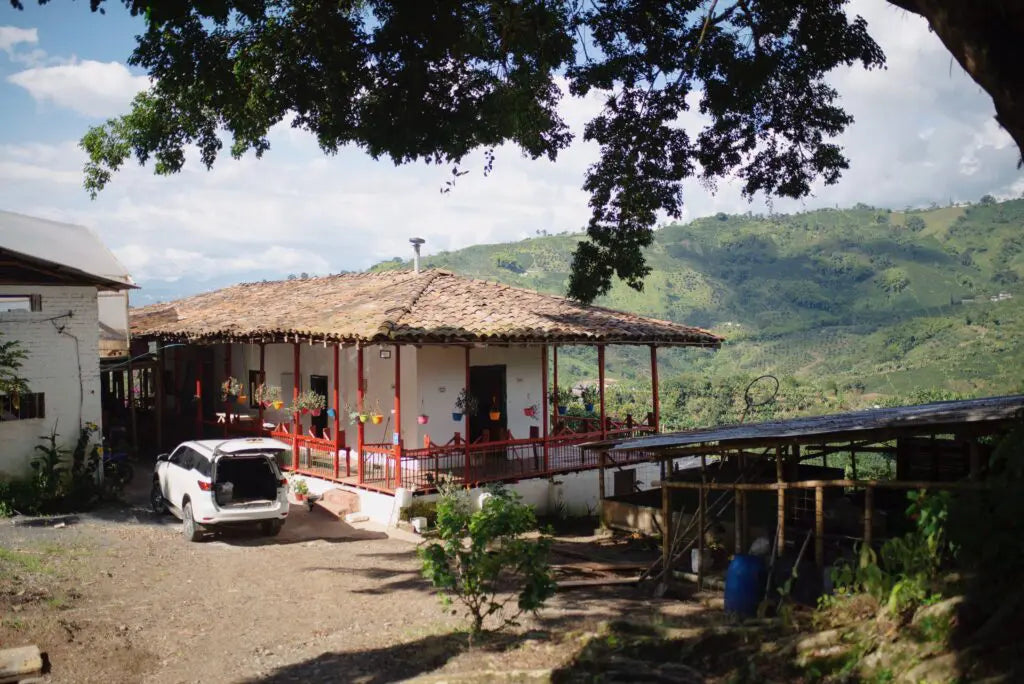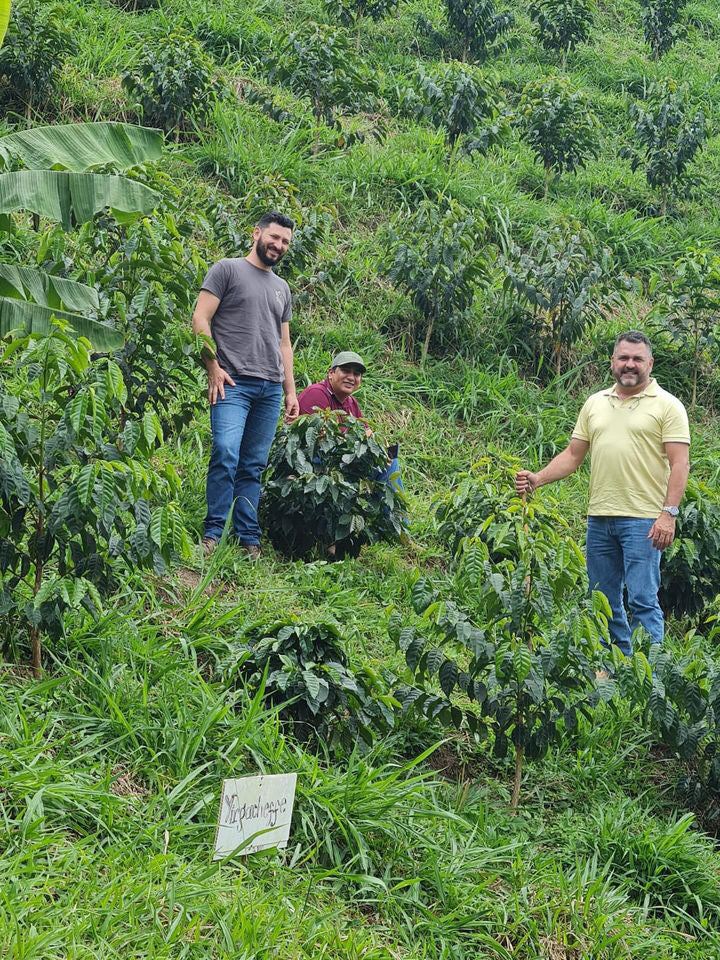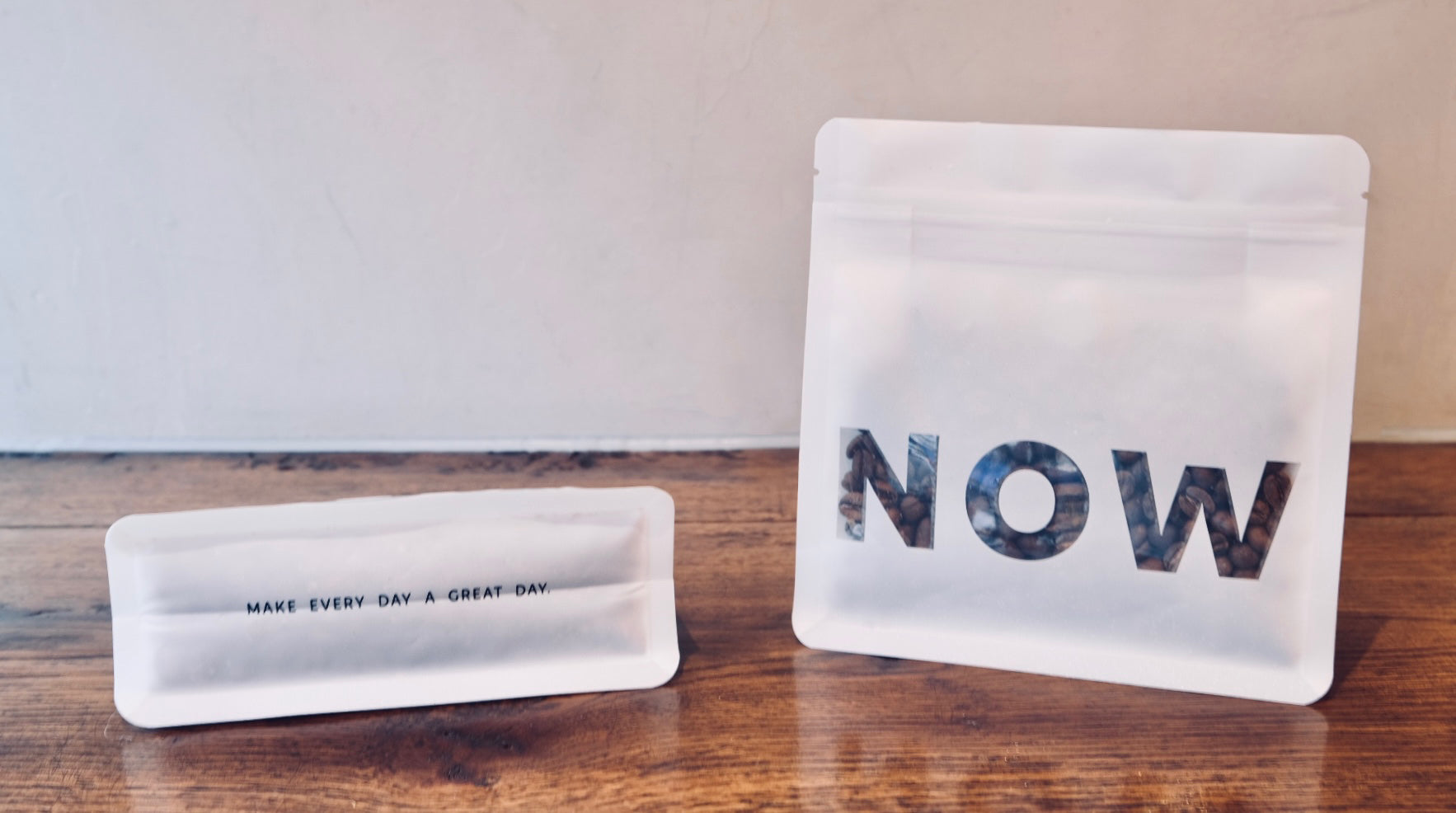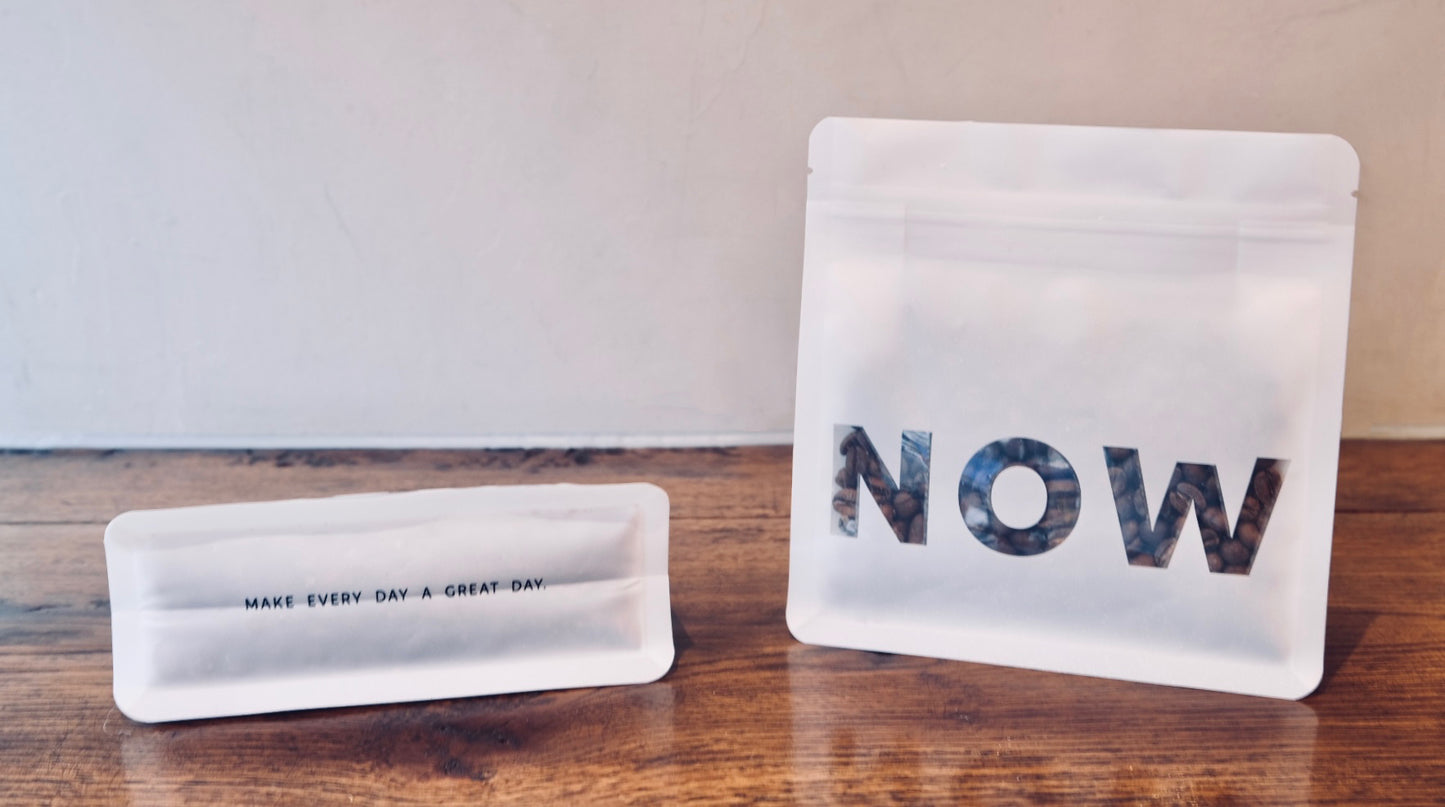06: COLOMBIA FINCA MILAN JULIO MADRID & ANDRES QUICENO CATURRA NITROGEN WASHED

ABOUT FINCA MILÁN
This chapter was introduced by our friend Gary Au, founder of Urban Coffee Roaster, who also completing with this coffee in HKBC 2023. Julio Cesar Madrid Tisnes comes from a family of coffee growers. Their farm, Finca Milan, has been in their family for over 40 years. They also own two other farms called Finca Riviera and Finca Buenos Aires. These farms have won many awards and championships for their coffee.

Finca Milan is located in the Risaralda Department, in the central foothills of the Andes Mountains. The soil in this area is young and full of nutrients from nearby volcanoes. The weather here has a wide range of temperatures, going up to 30ºC during the day and dropping to 15ºC at night. This helps the coffee cherries grow with unique and interesting flavors. Out of the 250 hectares of land in Finca Milan, 220 are used for growing different types of coffee such as Caturra, Castillo, Pink Bourbon, and Catiope.

JULIO MADRID & ANDRES QUICENO
Julio Cesar Madrid Tisnés is a third-generation coffee producer and has dedicated himself to the production of quality coffees. This dedication has led him to focus on producing coffee varieties that are relatively rare in Colombia and are known for their complex cup profiles, including varieties like Sudan Rume, Yirgacheffe, Laurina, and several others. Julio’s daughter, Maria Antonia Madrid, is a biologist who has researched the organoleptic impact of using microbial starter cultures in coffee fermentation, helping Julio to improve his processing methods.

WHAT IS NITRO WASHED PROCESS?
In the nitro washed process, fully ripe coffee cherries undergo a controlled stress phase that raises and lowers their temperature to around 12 degrees. This helps to maintain the cherries in optimal condition for further processing. Once the cherries have been pulped, the beans are placed in a special container called a bioreactor. Inside the bioreactor, the beans are inoculated with starter cultures consisting of yeast and bacteria, along with fruit must. The bioreactor is then sealed and nitrogen is injected to create an environment that promotes the metabolic activities of the microorganisms. Throughout this stage, the temperature, acidity, and Brix degrees are carefully monitored by comparing them to previous data. This monitoring ensures that the fermentation process is timed correctly and allows for the initiation of oxidation. After the beans are removed from the bioreactor, they are dried in solar dryers until they reach a moisture level of around 40%. They are then transferred to mechanical dryers to further reduce the moisture content to approximately 10% - 12%. Following this, the beans undergo a resting period of around 45 days in a warehouse before they are hulled and prepared for export.
A QUICK CHAT WITH ANDRES QUICENO
1. Can you tell me about the history and originsof your coffee farm? How didit all start?
My grandparents are from a coffee-growing
tradition and for over 40 years my father,
with discipline, tenacity, effort, hard work,
and a lot of knowledge, acquired the Milan
farm. He, my grandparents, and I are coffee
lovers. We carry the field and the love of
crops in our blood. I continue the legacy that
they left for me to deliver to the world
the best that our beloved Colombia has to
offer, coffee and the wonderful people who
accompany us day by day to achieve the best
product.
We are proud of what we have today, of what we
continue to create, we hope that
you can feel all the love and effort that we
have had from generation to generation to
deliver the best cup of coffee.
2. What makes your coffee farm unique ordistinctive compared to others inthe region?
Innovation and development are the most
important attributes and what
distinguishes us from other farms. We are on
the third generation of coffee culture,
our grandparents started it, then it passed to
my father, and we received the legacy
of perseverance and tenacity in coffee
cultivation. Our added value to that legacy is
innovation in processes and varieties.
3. Could you describe the specific coffeeprocessing methods used on yourfarm? How do these methods contribute to theflavor profile of this coffee?
These are fermentation techniques developed by
us on the farm, where fruits and
starter cultures are used for the fermentation
process. They contribute a lot to the
sensory profiles. The flavors, complexity, and
aroma of the coffee change with their
use.
4. Are there any particular steps or techniquesthat set your coffeeprocessing apart from others?
Yes, we have them. We have always been
characterized by being at the forefront of
development, and for this reason we have
created different techniques... Coldpress,
culturing and nitro fermentations; we have
fused different fermentation techniques
from other culinary techniques, such as
kombucha, yogurt, among others. We are
constantly validating different techniques to
obtain a variety of fermentation types.
5. How do you ensure the quality and consistencyof your coffee fromcultivation to processing?
The coffee that is processed in our
farms starts with guaranteeing the origin, which is supported by
production information, labor information, among others. All this allows us to
have planning, monitoring and control of the crop from planting to harvesting.
In terms of quality and consistency, we have
some parameters, and in this way it is
possible to ensure that these fermentation
techniques are standardized, for this we
have developed a step-by-step to proceed. We
also carry out evaluations at different
stages: harvesting, control of fermentation
time, we measure temperature and
degrees Brix, which allows to guarantee
consistency, in addition to a sensory
evaluation after processing the coffee,
allowing us to guarantee the attributes in the
coffee.
6. What role does sustainability play in yourcoffee farming practices? Arethere any specific initiatives you haveundertaken to promote environmentalor social responsibility?
Yes, we have specific initiatives to promote
environmental and social responsibility.
For 20 years, we have been thinking about
coffee differentiation, the first thing we did
was to have certifications in the farms:
Quality, Practice, UTZ, Flow, different seals of
quality and sustainability. Currently the farm
La Riviera is certified with the Rain
Forest certification. Climate change has led us
to change our production techniques,
rethinking different cultural practices, for
example, the use of herbicides, are not
used in coffee crops.
From the social side, being producers and
exporters of coffee, allows us to have
better profitability and remuneration to
workers, that is why within the company we
have formal work. Our premise is the well-being
of employees, their development
and formalization, so that in this way they not
only achieve personal goals, but also
connect with our purpose as a company, which is
to bring the best cup of coffee to
every person.
7. How do you engage with the local community andsupport the farmers andworkers involved in coffee production?
As we have a significant land extension, we can
generate employment and build
society with more workers involved. Our
priority is to support the people of the
region. As coffee producers, it is a bit more
complex, because in the region, we still
have traditional coffee production culture,
that is why our processes are not common
for this type of coffee growers.
As mentioned in other points, we are producers,
processors and marketers of coffee.
This gives us a more complete focus on the
business. The practices that are used
are not so well known in Colombia. We always
involve and empower people who
want to be part of our company, who want to
innovate and be disruptive in the
industry.
8. Can you share any memorable or significantmoments in the history ofyour coffee farm?
One of the most satisfying moments for me was
when we were recognized as one of
the best coffee producers in the region. We
have won awards such as XXXXXX,
which has given us international recognition
and helped us to position ourselves as
one of the best coffee farms in Colombia.
And the fact of having created this wonderful
company, with people who are thriving,
coffee lovers, full of values, qualities
9. What types of coffee varieties do you grow? Doyou have any plans tointroduce new varieties in the future or expandcertain varieties alreadygrown?
- Castillo
- Colombia
- Caturra
- Caturra
- Chiroso
- Yellow Bourbon
- Pink Bourbon
- Red Bourbon
- Bourbon Tekisic
- Bourbon Sidra
- Bourbon Rayado
- Ají Bourbon
- Bourbon Pointu or Laurina
- Moka
- Gesha
- Ethiopian Seed (Yirgacheffe)
- Sudan Rumé
- SL 28
- Java
- Maragogype
- Catiope
We are always looking for new varieties of
coffee to grow. We are interested in
introducing new varieties that are resistant to
diseases and climate change, and that
have unique and distinctive flavors, like the
Pink Bourbon and the Bourbon Sidra.
10. In your opinion, what is the significance ofcoffee to your farm and thesurrounding community?
Coffee is an essential driver of the economy, not only in our region but throughout the country. Through coffee, we have provided education for our children, and we ourselves have been educated with the resources that our ancestors obtained through great effort and dedication. Today, coffee is not only globally recognized but also locally desired for its superior quality, especially when produced in our region.
The coffee industry creates employment opportunities, enriches the lives of thousands of families directly and indirectly involved, and helps maintain our worldwide reputation as a leading producer of top-quality coffee. Coffee is a symbol of our Colombian identity and serves to unite us as a community. It instills pride in us and inspires hope for the future.
BREWING RECIPES
BREW AS ESPRESSO
20g coffee in 45g out
Water/ 93°C
Brew time for this recipe should be around 24 sec
brew with TRICOLATE
12g coffee / 185g water / 93degC
⏱ 00:00 | 40 grams
⏱ 01:00 | 70 grams (up to 100g)
⏱ 02:00 | 75 grams (up to 185g)
⏱ 03:30 | Finish
NOTES
LOOKING FOR OUR NEXT CHAPTER?
JOIN US FOR MORE EXCITED COFFEE

COFFEE : SUBSCRIPTION : NOW


